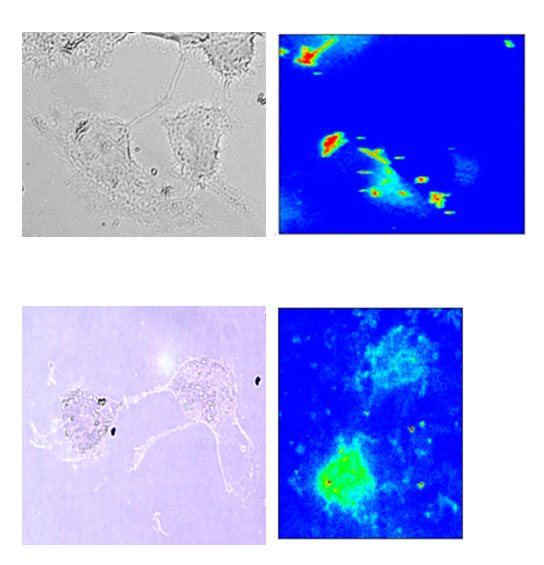- Home
- News
- General News
- How can asbestos...
How can asbestos teach us about carbon nanotubes?
15-01-2018
Carbon nanotubes (CNTs), already used in industry, have a fibrous structure that resembles that of asbestos. A team from University ofTrieste, IRCCS Burlo Garofolo, University of Turin, Elettra (Italy) and ESRF has studied both materials at the ESRF’s beamline ID21 and Elettra and has found that the presence of iron impurities in CNTs causes an asbestos-like toxicity in pleural cells. The scientists publish their results in Scientific Reports today.
Carbon nanotubes are great candidates for industrial applications, from biomedical to technological, due to their excellent properties. These include their unique surface area, excellent chemical stability and rich electronic polyaromatic structure. They have also been proved to be excellent vehicles for drug delivery. Possible side effects of these new materials are, however, unknown. “It is important to find out if CNTs are toxic or not, not only with regards to medical applications, but also for the workers and final users who can be potentially exposed to health hazards by manipulating CNTs”, explains Lorella Pascolo, scientist in charge of the research. “The striking similarity with asbestos led us to study whether asbestos could shed light on this material”, she adds.
Pascolo and her team have been studying asbestos' toxicity since more than ten years and five years ago they showed how long-lasting permanence of asbestos' bodies in lungs causes a continuous alteration of iron metabolism. The presence of transition metals in the fibres and the ability of these fibres to attract metals are central processes to explain pathogenicity of asbestos. Scientists had the hypothesis that the same could happen with CNTs.
 |
|
Part of the team collecting data (left: Lorella Pascolo, right: Alessandra Gianoncelli). |
The team came to beamline ID21 to use X-ray microscopy and fluorescence to scan human cells that had been in contact with raw, single-walled nanotubes. The combination of synchrotron X-ray fluorescence of ID21 and soft X-ray microscopy of TwinMic (Elettra) allowed them to study the fibres uptake in lung cells and to distinguish the intracellular fibres from the extracellular ones. Their results revealed that an alteration in the intracellular iron concentration takes place, as well as an increase in the ferritin production, like with asbestos fibres. It also showed that highly purified nanotubes, where iron impurities had been greatly reduced, do not alter cell iron metabolism, and therefore show minimal toxicity. “This is good news for our colleagues studying CNT for biomedical applications”, says Pascolo.
 |
|
Cells exposed to asbestos fibres (top left) and carbon nanotubes (bottom left) and the X-ray fluorescence images of the same cells showing Fe distribution. Credits: L. Pascolo. |
“We have shown that in asbestos there is often an alteration of the iron metabolism, which makes it toxic, and this also happens in CNTs at a cellular level, at least with unpurified CNTs”, she explains. “The increasing industrial use of CNTs is very far from the size of asbestos usage in the 70s. However, after the tragic epidemic of asbestos-related diseases, it is important to monitor CNTs pathogenicity and constantly set updated protocols, guidelines and regulations for their manipulation”, she concludes
The team will continue researching on CNTs, and their next project involves studying the possible asbestos-like effects of this material in placenta cells, where it could endanger the health of the foetus.
Reference: Cammisuli F. et al, Scientific Reports 8, Article number: 706 (2018). Doi:10.1038/s41598-017-19076-1
Text by Montserrat Capellas Espuny
Top image: An artistic impression of a carbon nanotube. Credits: Model.la.



